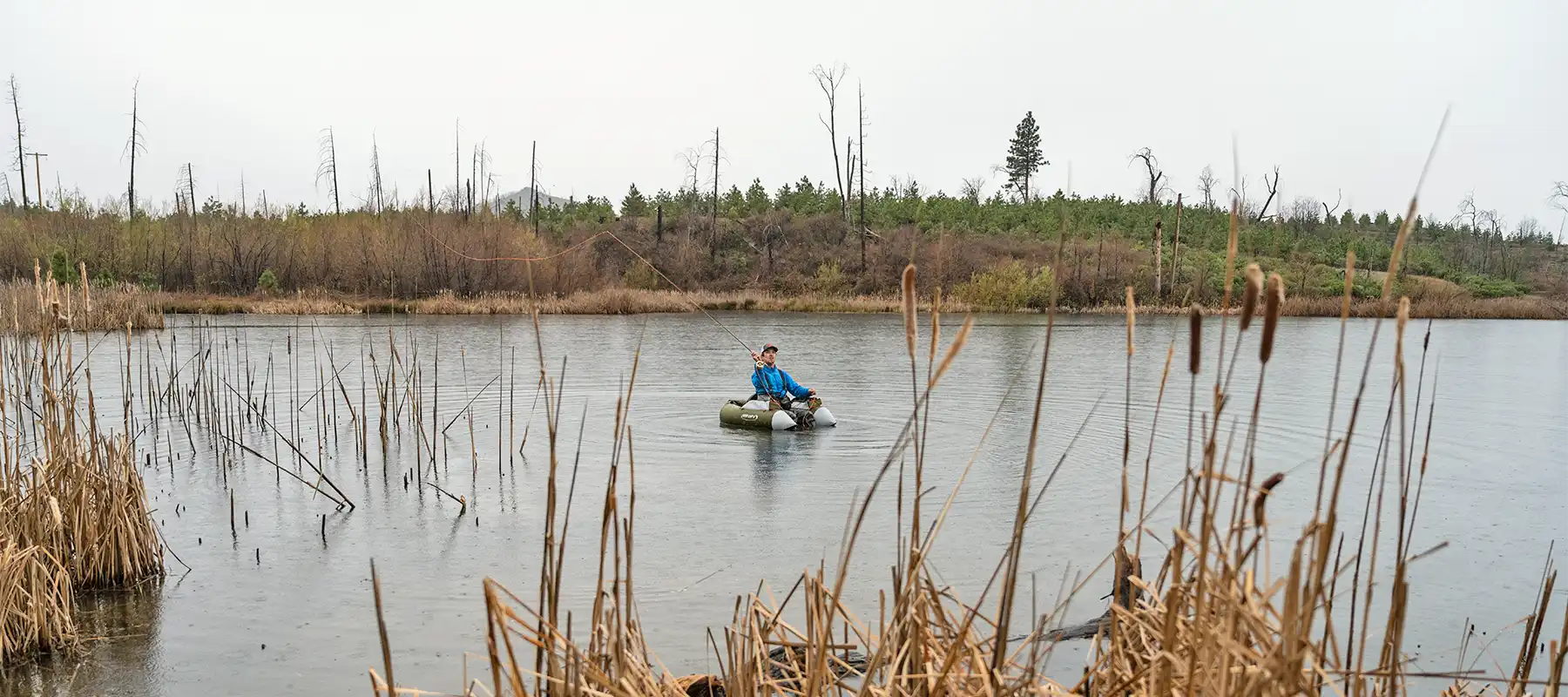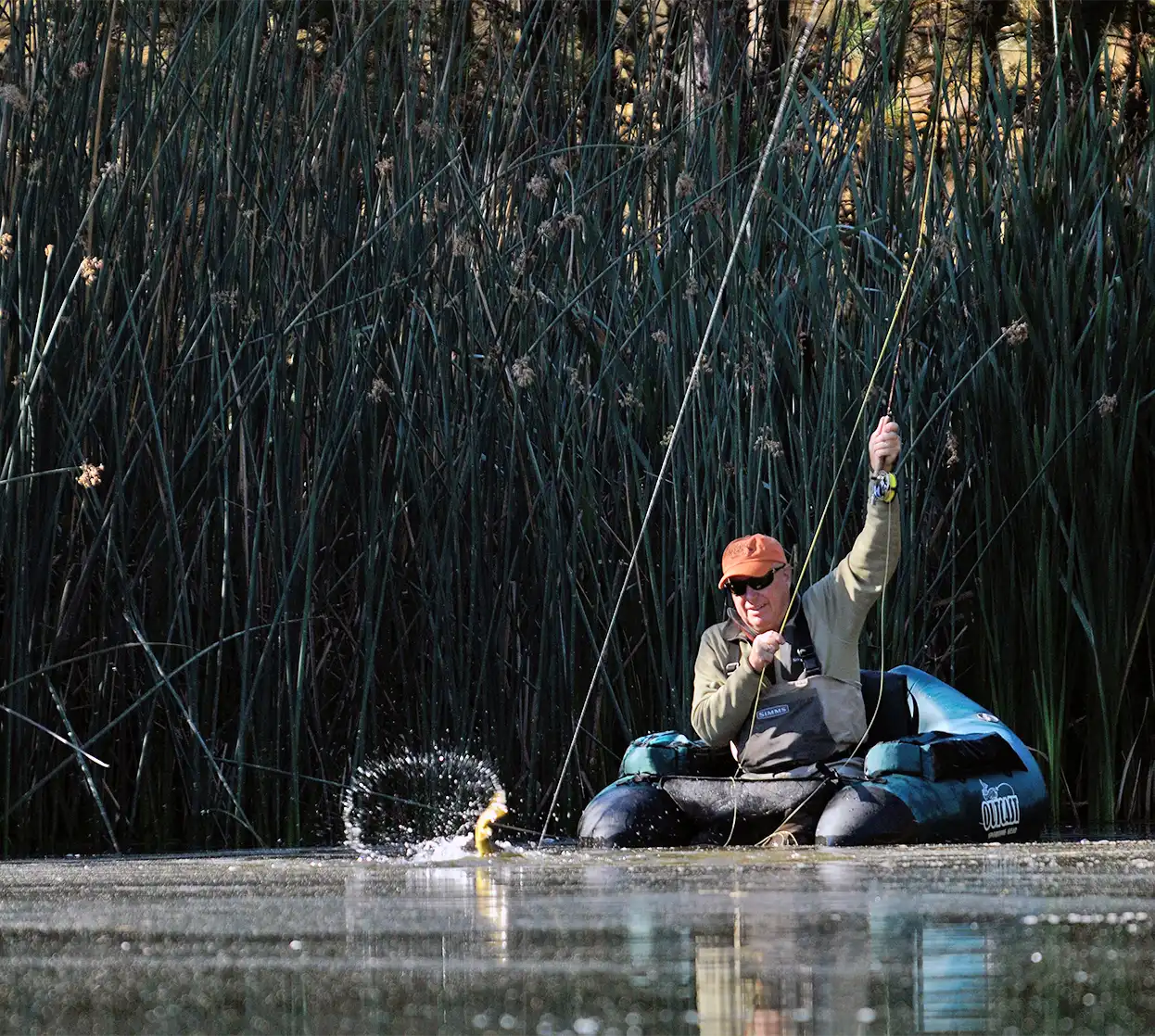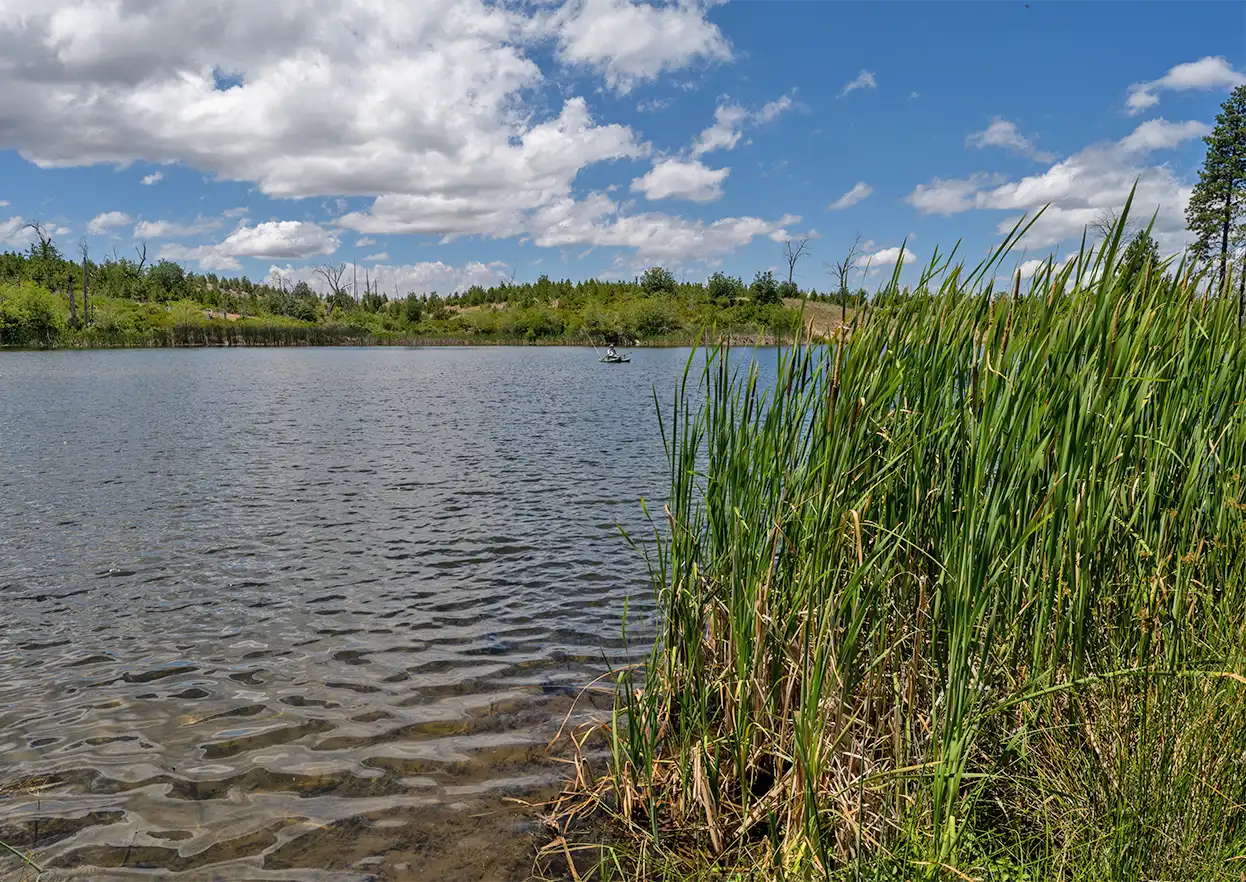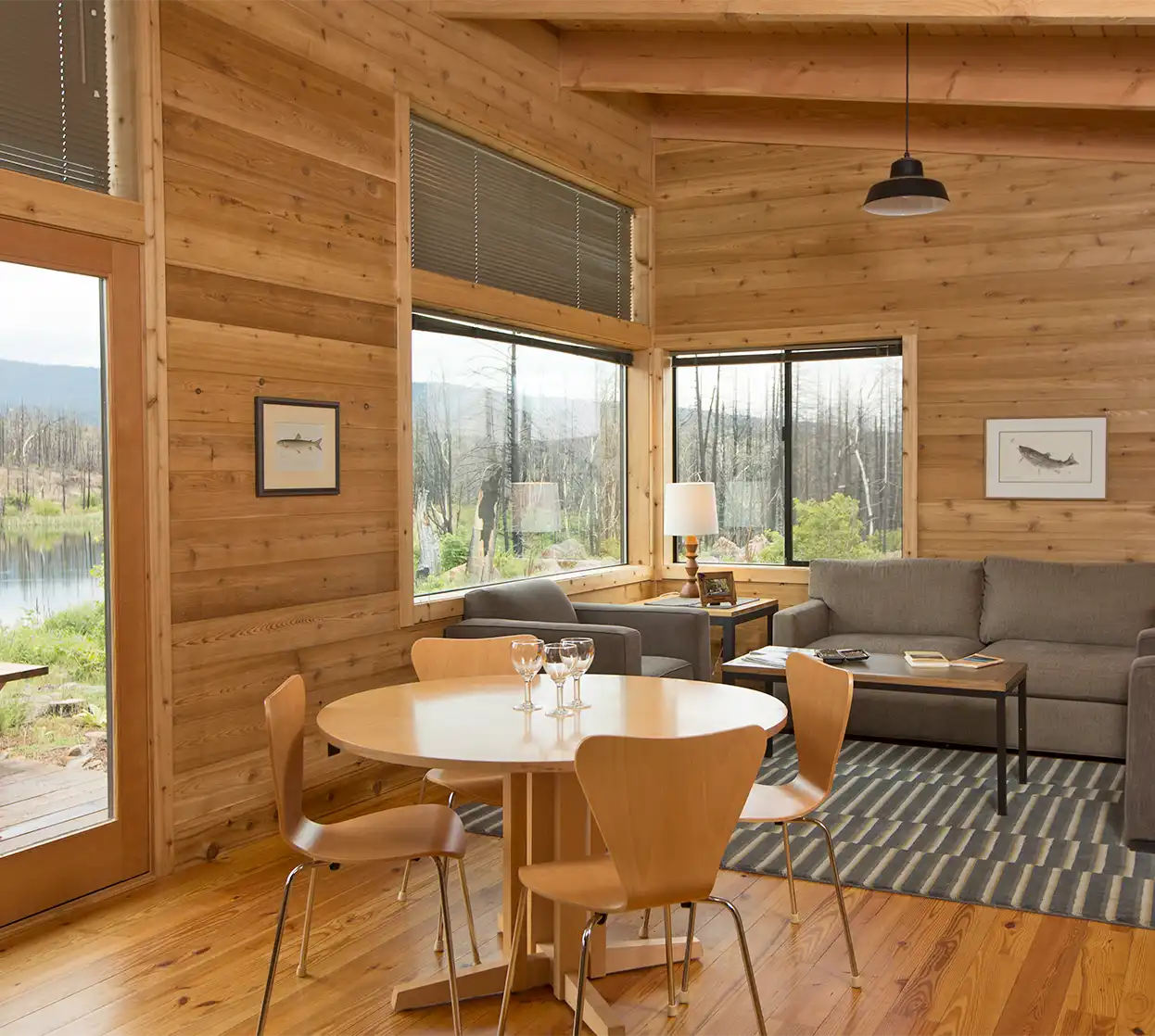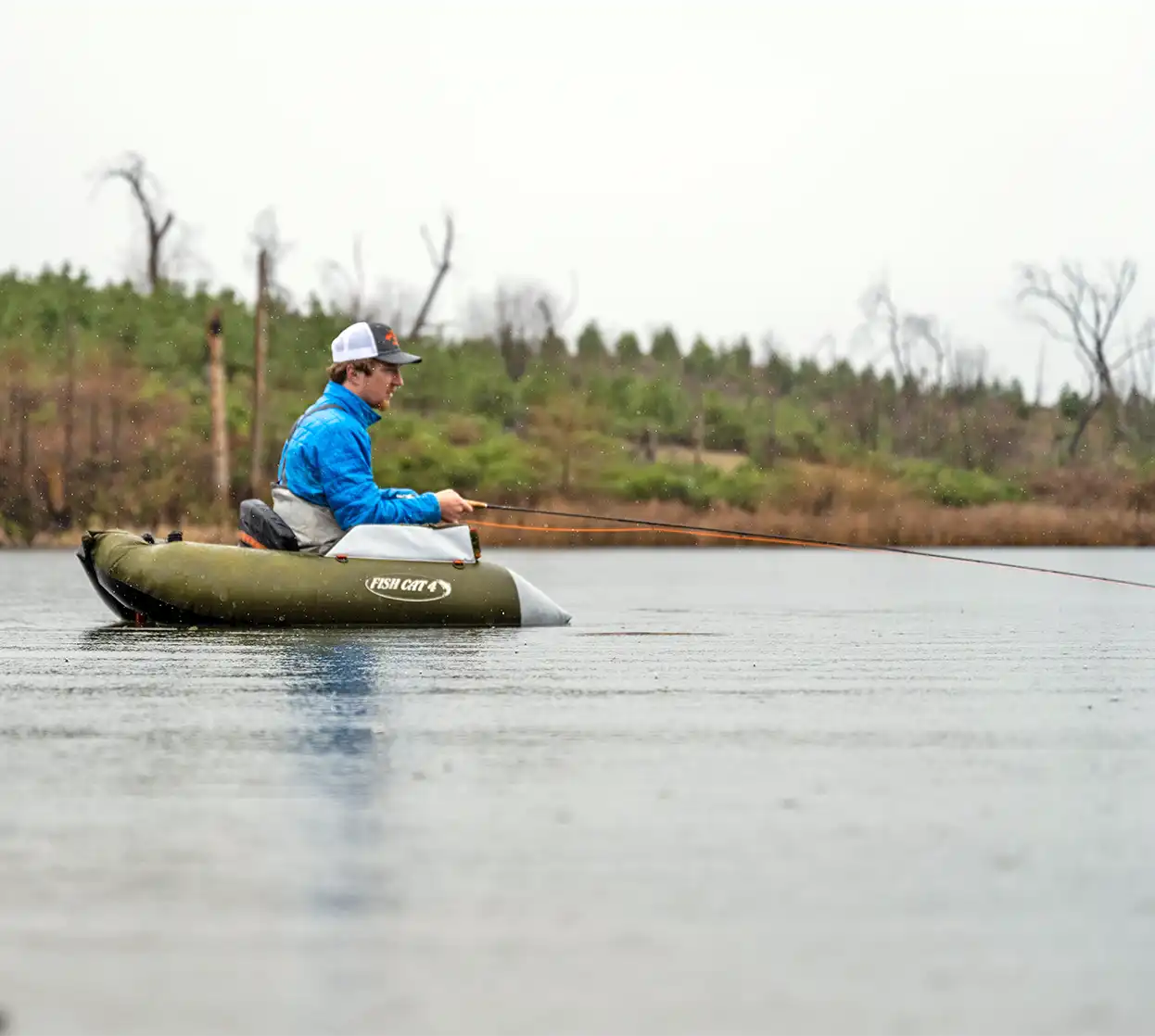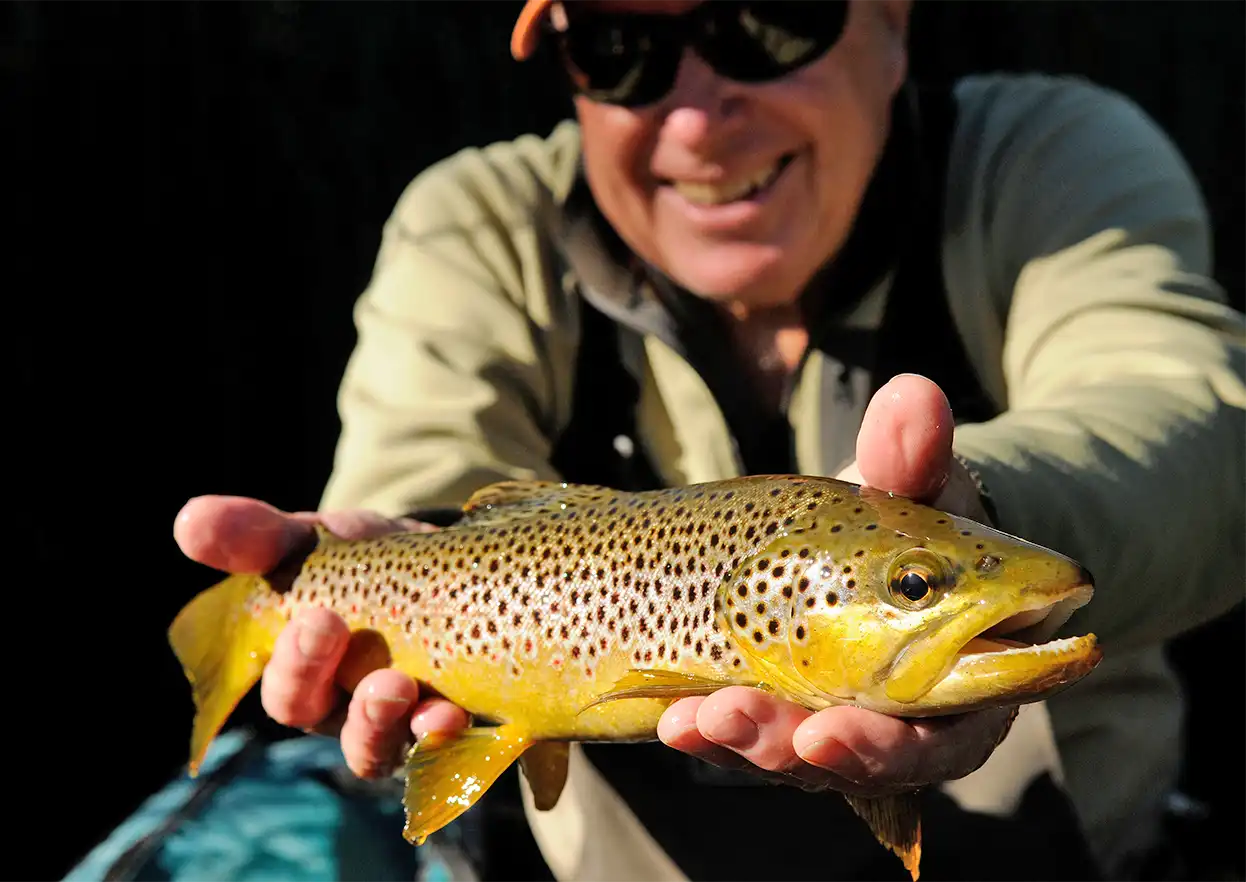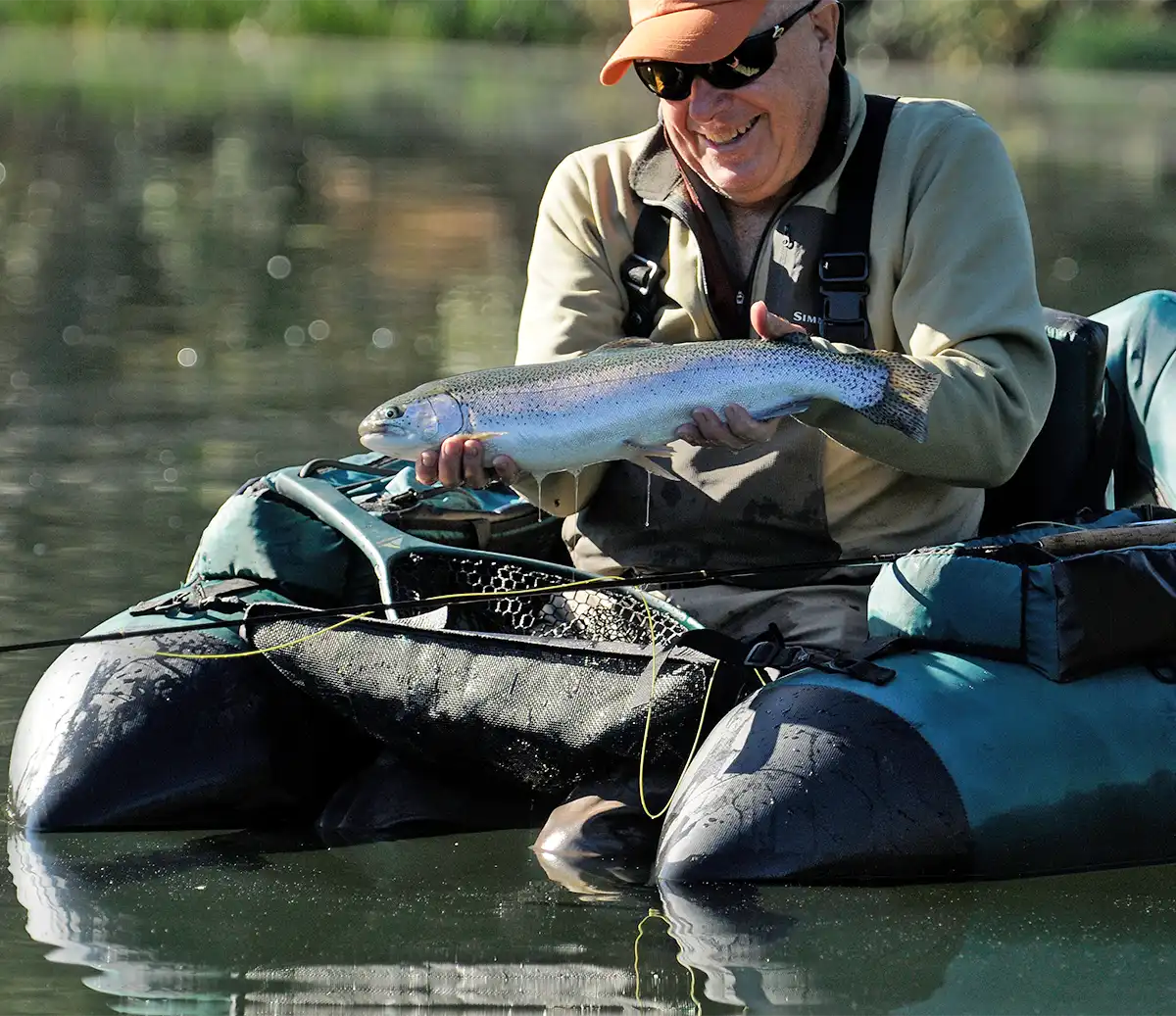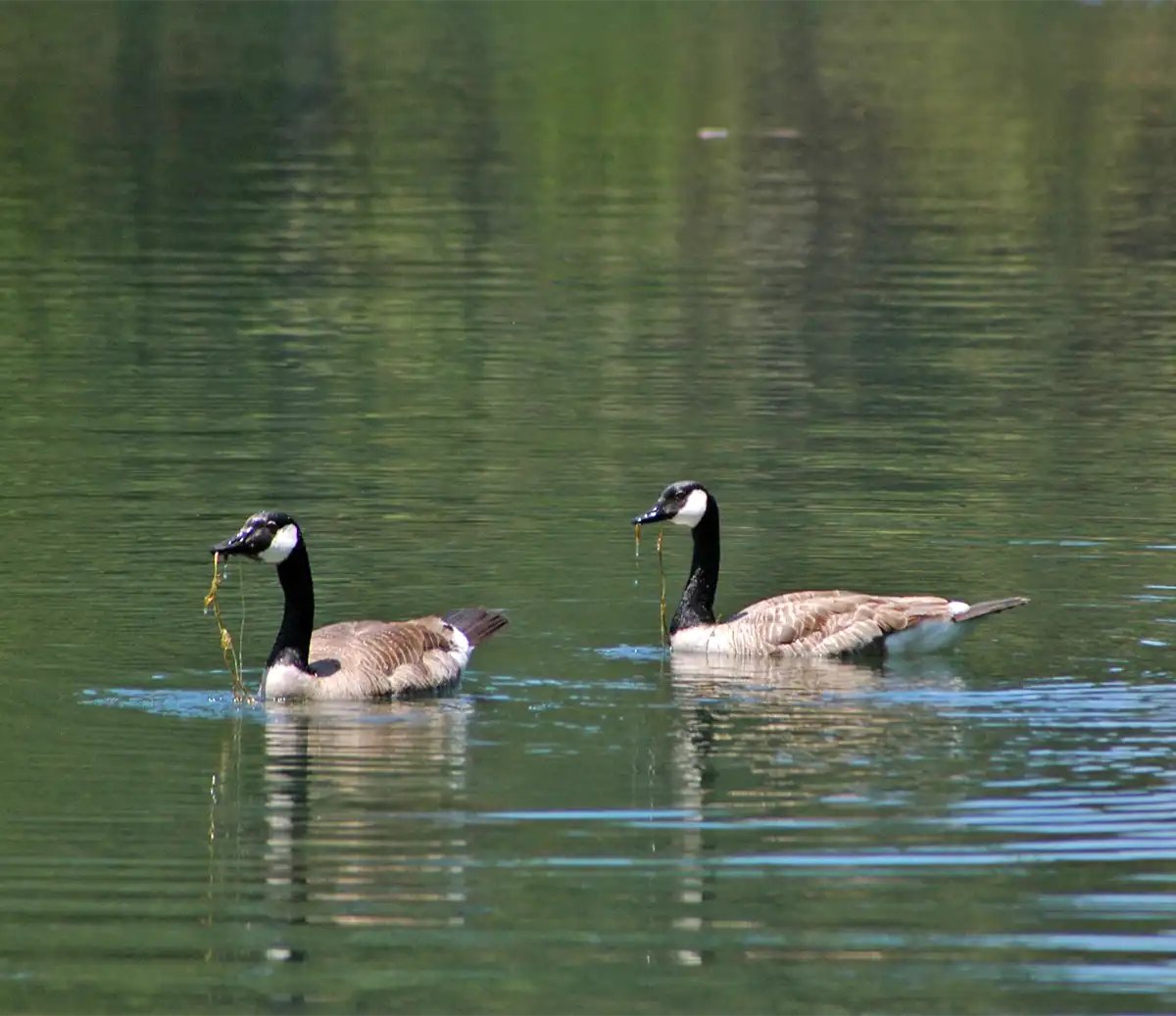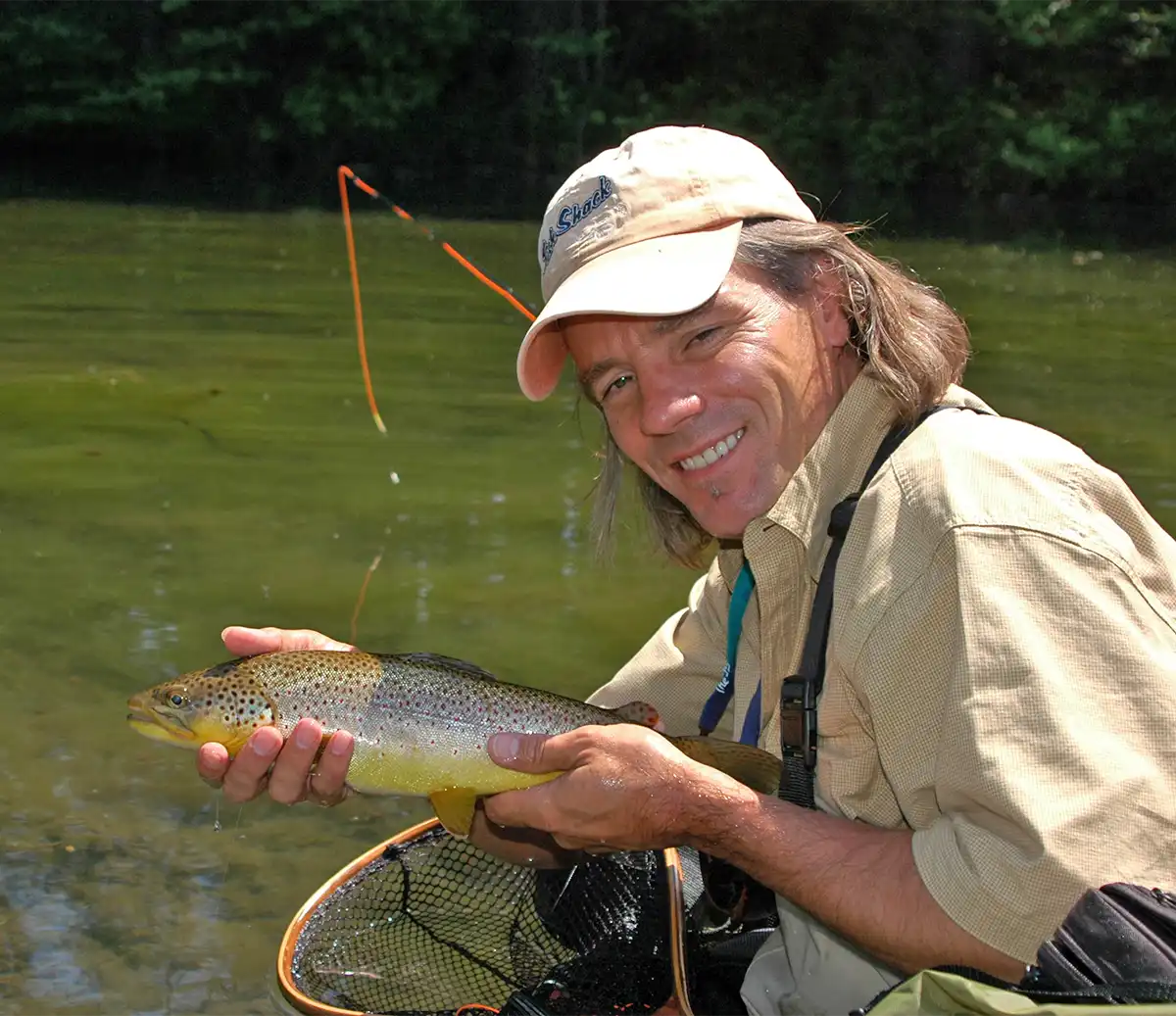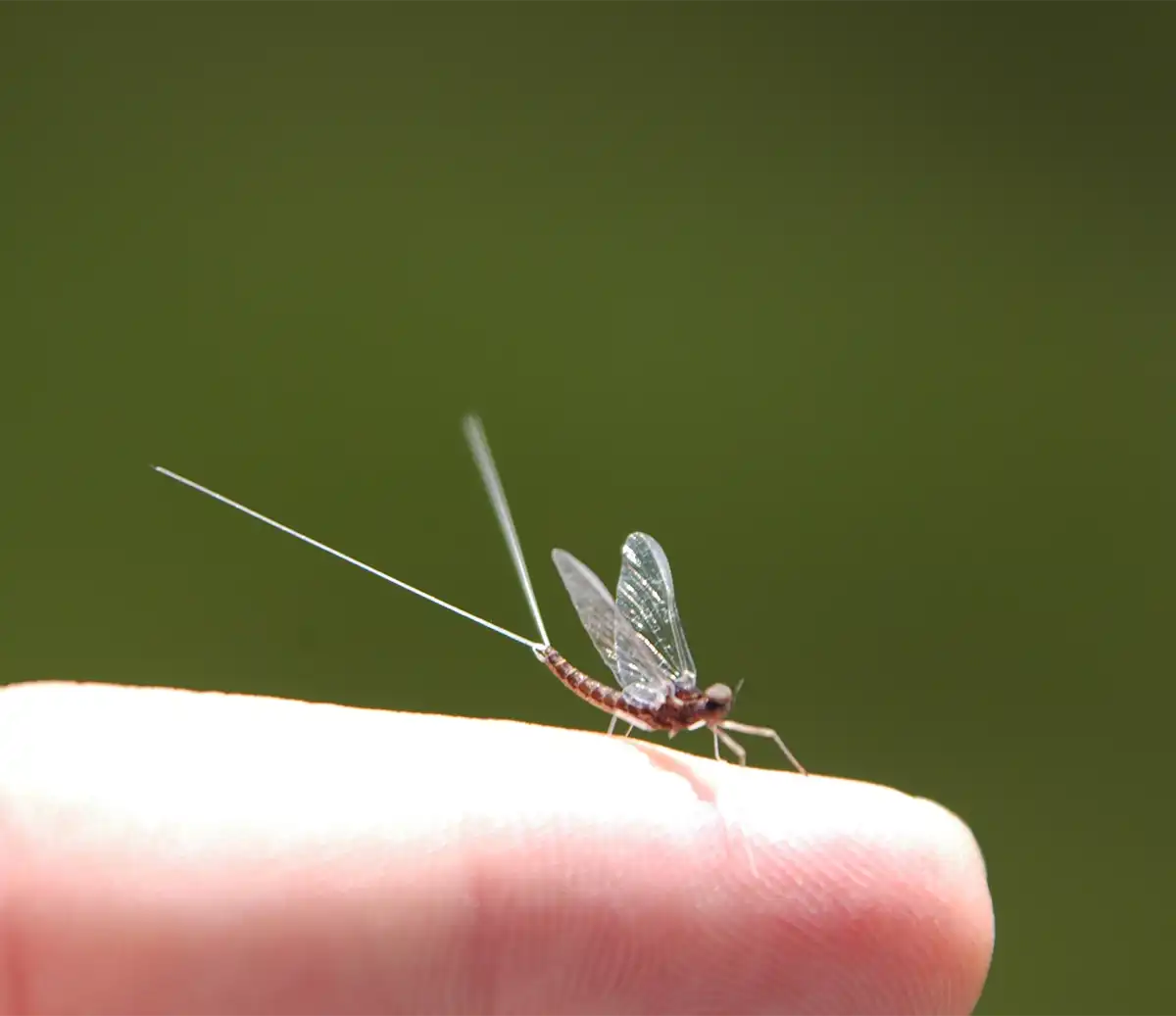Best fished from a float tube, this small gem has great rainbow trout fishing year ’round!
This companion lake to Rock Creek Lake is a great day fishing getaway for small groups who love fishing for stillwater trout. It is a comfortable 50 minute drive from either Red Bluff or Redding, and is easily accessible by paved roads to the ranch gate. Once on the property beyond the gate, you will want a vehicle with clearance to get to the lake. Besides plying the waters for the rainbows and wild browns, there is plenty to do nearby including sight seeing at the nearby National and State Parks.
While the 2012 Ponderosa fire devastated the area, the scrub oaks and manzanita are making a comeback and the drive into the lake has views of Mt. Lassen making this is one of our more uniquely beautiful locations. Rock Creek itself runs right through the middle of the lake and provides a short spawning section for the lake’s many browns and rainbows. The lake was built in the 30’s as a water source for a historic lumber mill, but now it is used only for the pleasure of our clients. Most of the lake is quite shallow, but the north shore has a channel where Rock Creek once flowed holding many of the lake’s fish, where they ambush terrestrials in the spring and summer.
Hatches of one kind or another seem to occur every day of the season on Lake Christine, and as a result one can use dry flies much of the time. See the section on seasons to get a detailed description of fishing Lake Christine. You will need a float tube or pontoon craft to really fish the lake properly. Prams or any kind of boat are prohibited at Lake Christine.
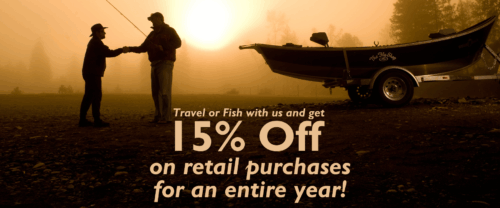
Headed out on your next adventure with us? The Fly ShopⓇ has you covered. As a thank you to our guide service, private waters and school guests, enjoy 15% off all retail purchases for a year! — the perfect chance to gear up before your trip.
Whether it’s flies, leaders, apparel or a new rod and reel outfit, we’ve got everything you need to make your journey more comfortable, more successful, and more fun. (some exclusions apply)

